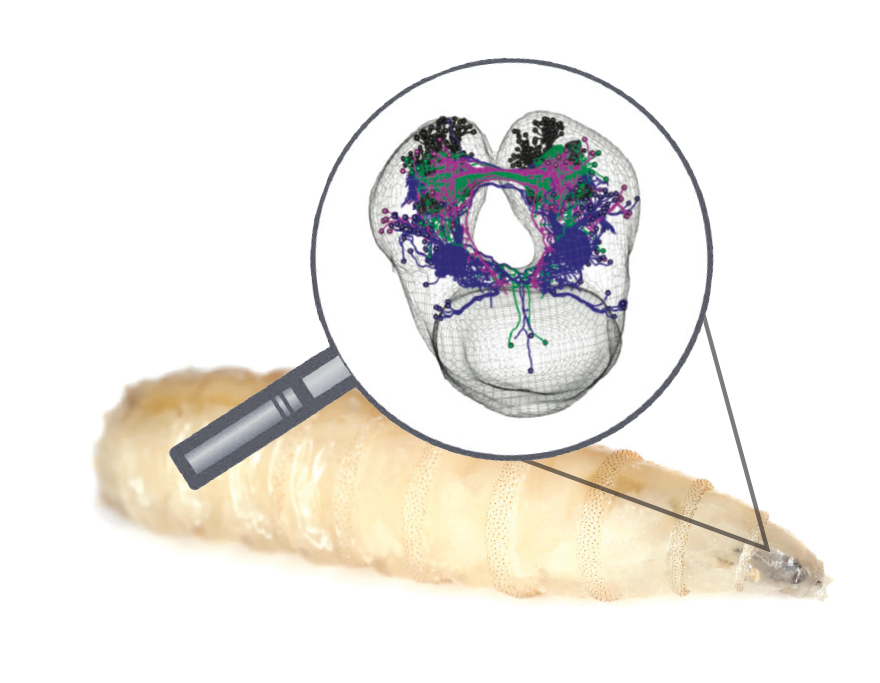
In an early step toward mapping how all animal brains work, Johns Hopkins Engineering’s Carey E. Priebe has joined an international team of neuroscientists to create a complete map of the learning and memory center of the fruit fly larva brain.
The map, known as a “connectome” and recently reported in Nature, could serve as a guide for scientists working their way up the animal kingdom and eventually charting connections among neurons in the brains of mammals. The part of the fruit fly larva brain used in the study corresponds roughly to the cerebral cortex in mammals.
“Nobody’s ever done a complete connectome before, other than for a roundworm brain with roughly 300 neurons,” says Priebe, a professor of applied mathematics and statistics, who collaborated with computer scientist Youngser Park from the Whiting School’s Center for Imaging Science.
The portion of the fruit fly larva brain mapped in the project includes roughly 1,600 of the 10,000 neurons contained in a larva’s entire brain. The adult fruit fly brain comprises roughly 100,000 neurons, and the leap in complexity to mammals is far greater still. At the top of the chain, the human brain contains 86 billion to 100 billion neurons.
While Priebe does not expect to see a complete synapse-level structural connectome for the human brain completed in his lifetime, he said the new work moves the effort forward. “It is a step,” he says. “It’s an early step, but it’s a step.”




